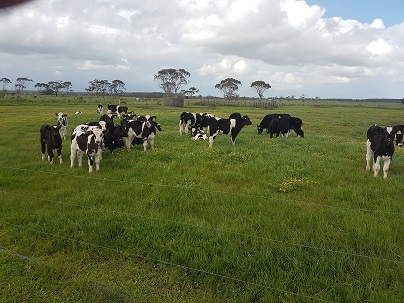Calves are an Investment not just a cost

Calves are not easy to rear, and we invest significant money and labour, but research concludes they influence our future productivity. Apart from obvious genetic gain, nutrition in the first week can play a major role in expression of genetics in profitable lactation, fertility and longevity.
Colostrum
Everybody knows the importance of colostrum for short and long-term health of the calf. Yet a study published in the Journal of Dairy Science, involving 24 dairies in the Rochester area of Victoria, and 200 colostrum samples, revealed only 23% were found to be satisfactory. A majority of calves were receiving colostrum with high bacteria levels. This reduces the transfer of passive immunity. Although there was no mention of actual immunoglobulin content, based on similar US studies, only 33% of colostrum contained adequate immunoglobulin. Our own work in this area has proven conclusively, low protein in transition diets is a determining factor in adequate passive transfer of immunity (quality colostrum).
There is a lesser known fact regarding colostrum quality and quantity, and that is the 180 identified other substances in colostrum are responsible for ‘switching-on’ genes. Failure here can render genetic gain through AI null and void.
Nutrition from Milk
Consideration needs to be given to the quality of milk fed to calves. Pooled colostrum and pre-vat milk can supply adequate nutrients, however, feeding mastic milk from treated cows or antibiotic milk (blue milk) is courting disaster. While we are hoping to grow rumen bacteria populations to digest solid feeds, we will demolish any progress here with antibiotics from ‘blue milk’. Potential pathogen load in milk is also a threat. There is a growing trend to pasteurisation on-farm of calf milk overseas. The few farms I’ve heard of in Australia doing this have experienced major gains in calf health which translates directly to growth rates and minimal health related costs in both drugs and especially, labour.
Environment
A clean comfortable environment for developing calves would seem obvious. Yet failure in this area is widespread. In recent years I have seen purpose built calf facilities that are producing excellent results. Airflow in summer, warmth in winter and ventilation to remove ammonia, a major cause of respiratory disease, are essential. Immune function is an energy-hungry system. Calves fighting disease will be energy-starved for growth and organ development. Group housing fosters respiratory disease through common water and starter grain feeders. General cleanliness of bedding will minimise pathogen load and clean water and grain facilities will reduce the spread of disease. From a grain intake perspective, it must be fresh daily. Water intake drives grain intake, and grain intake drives rumen development and reduces time to weaning. We invest heavily in rearing replacement stock whether the job is done well or not. Calf mortality is a significant drain on farm profit both immediately and in the longer term when replacements do not meet herd requirements and potential cull cows are carried over. Several of our clients have developed a good income stream from sale of surplus livestock through calf-rearing excellence of both heifer and bull calves.